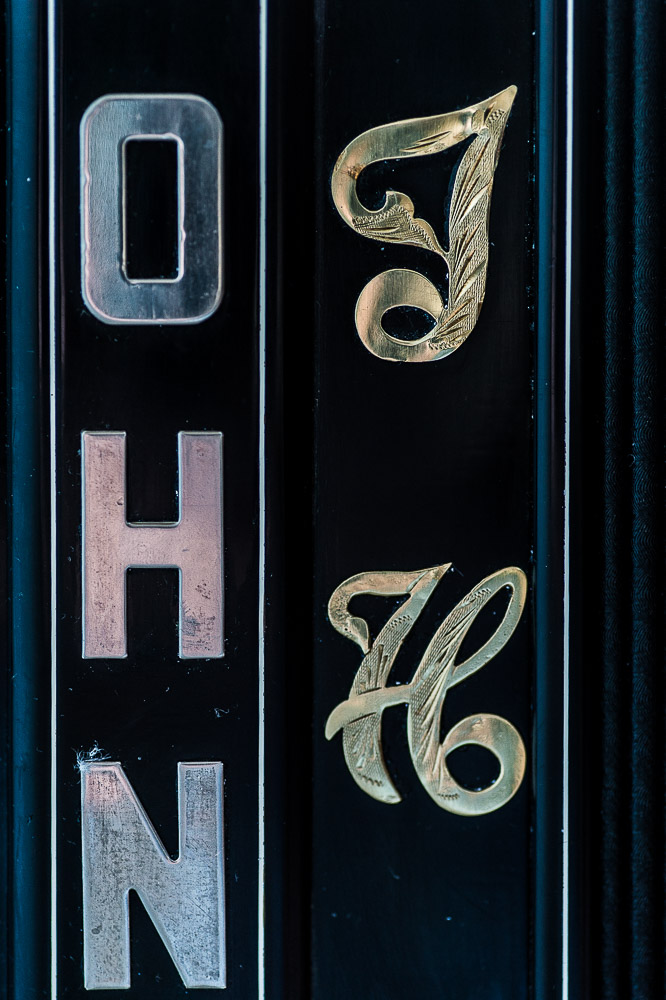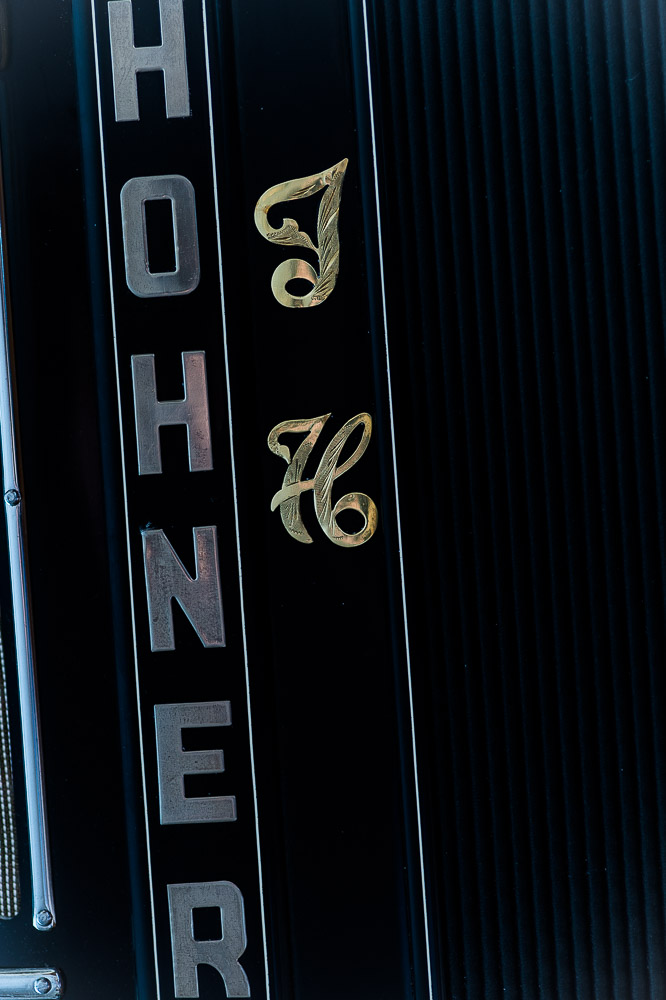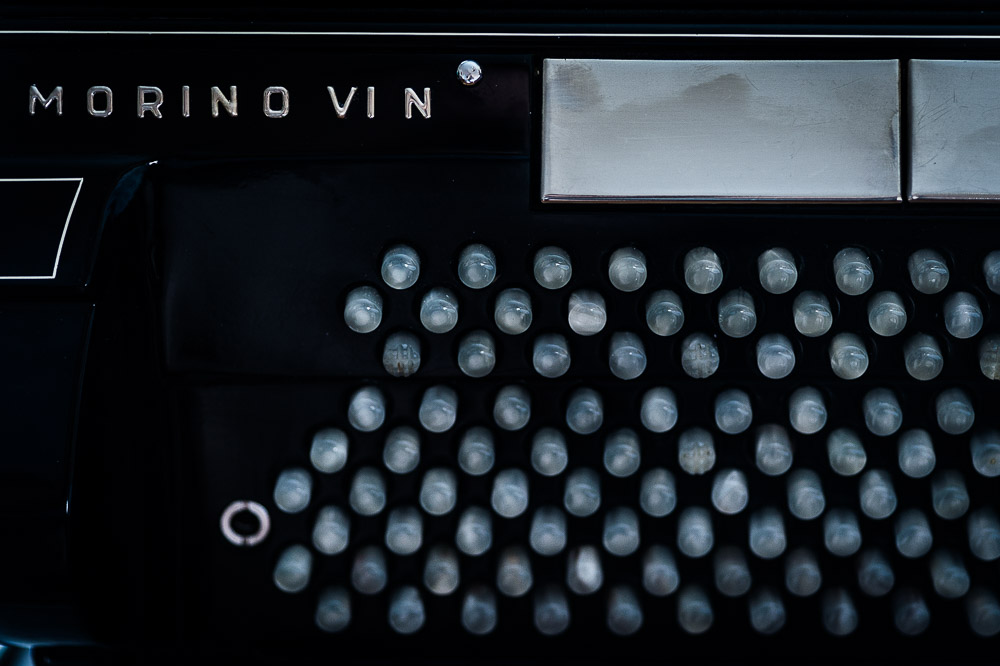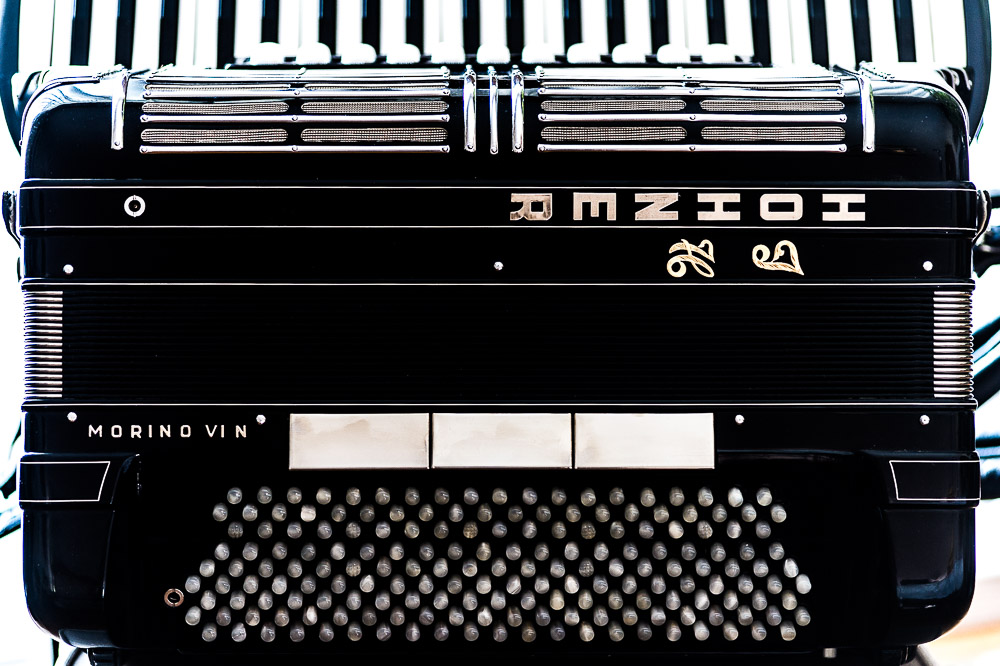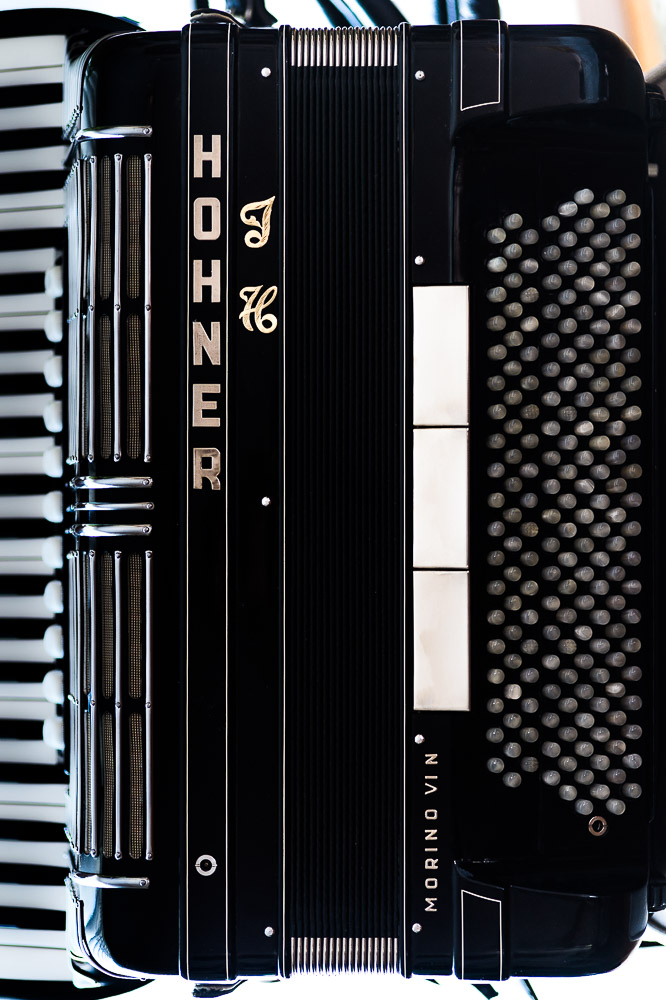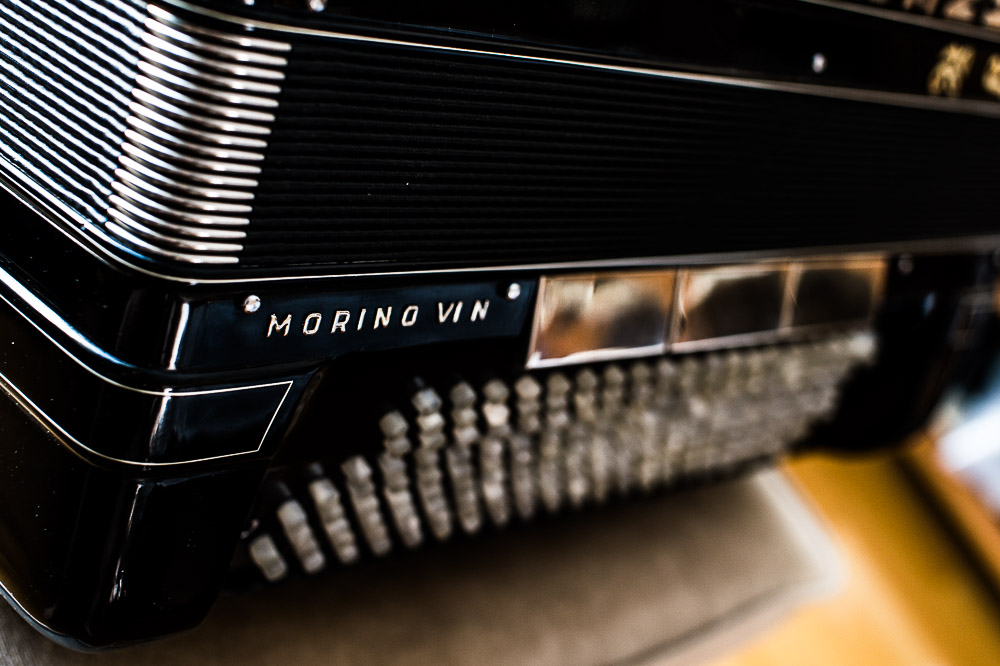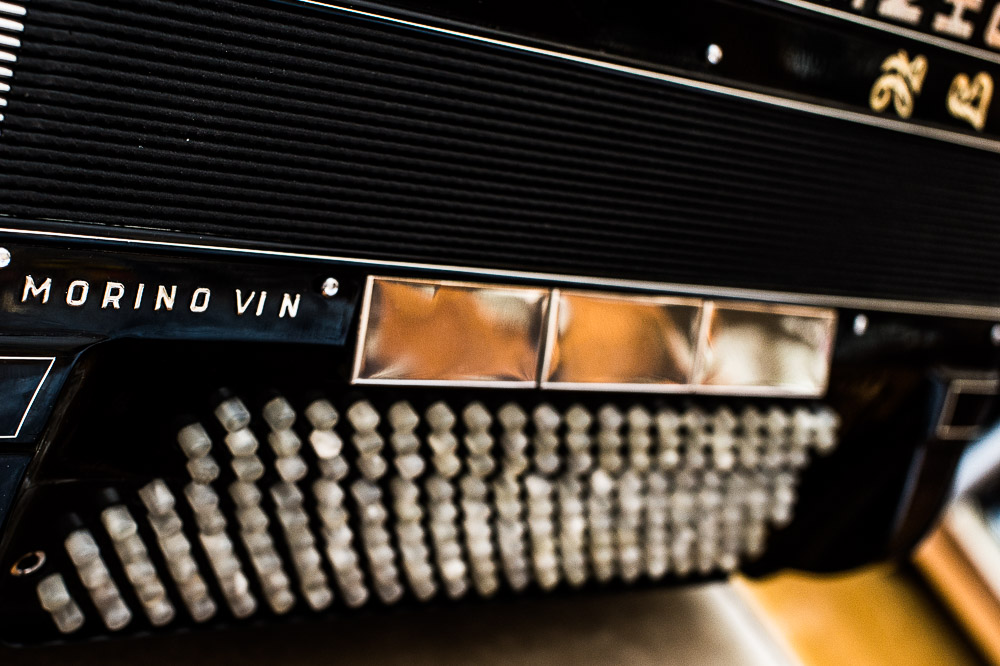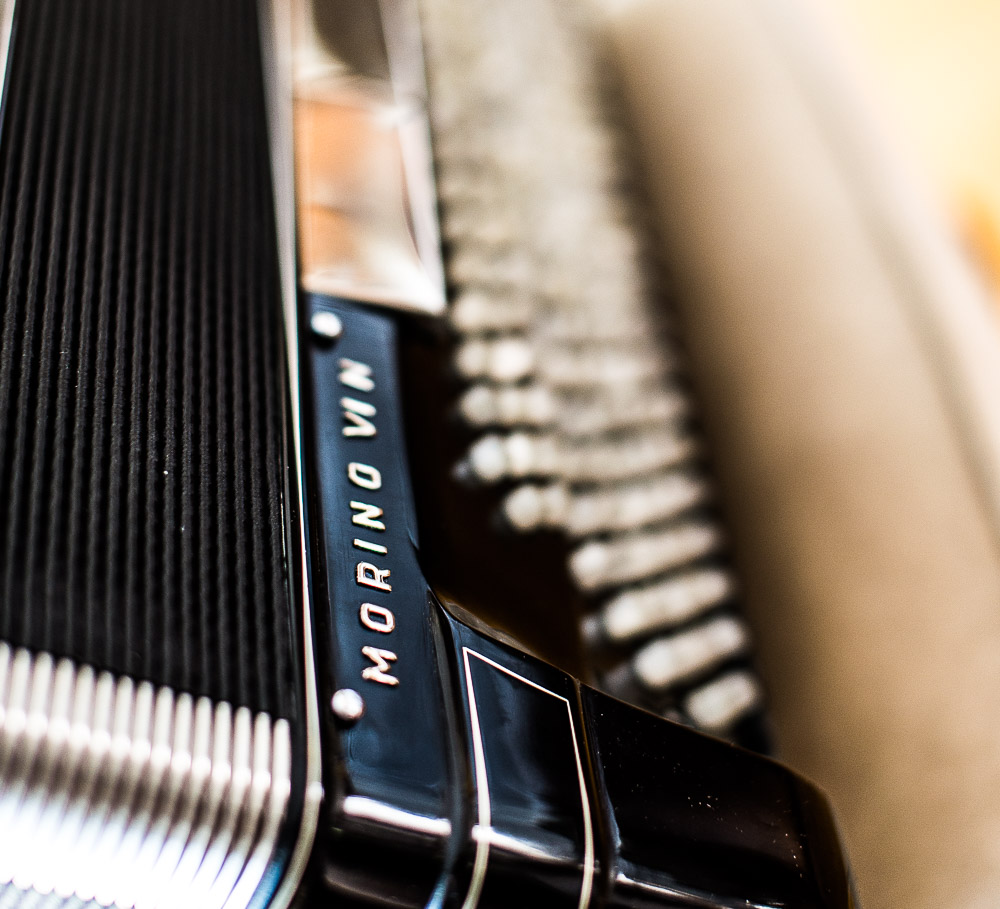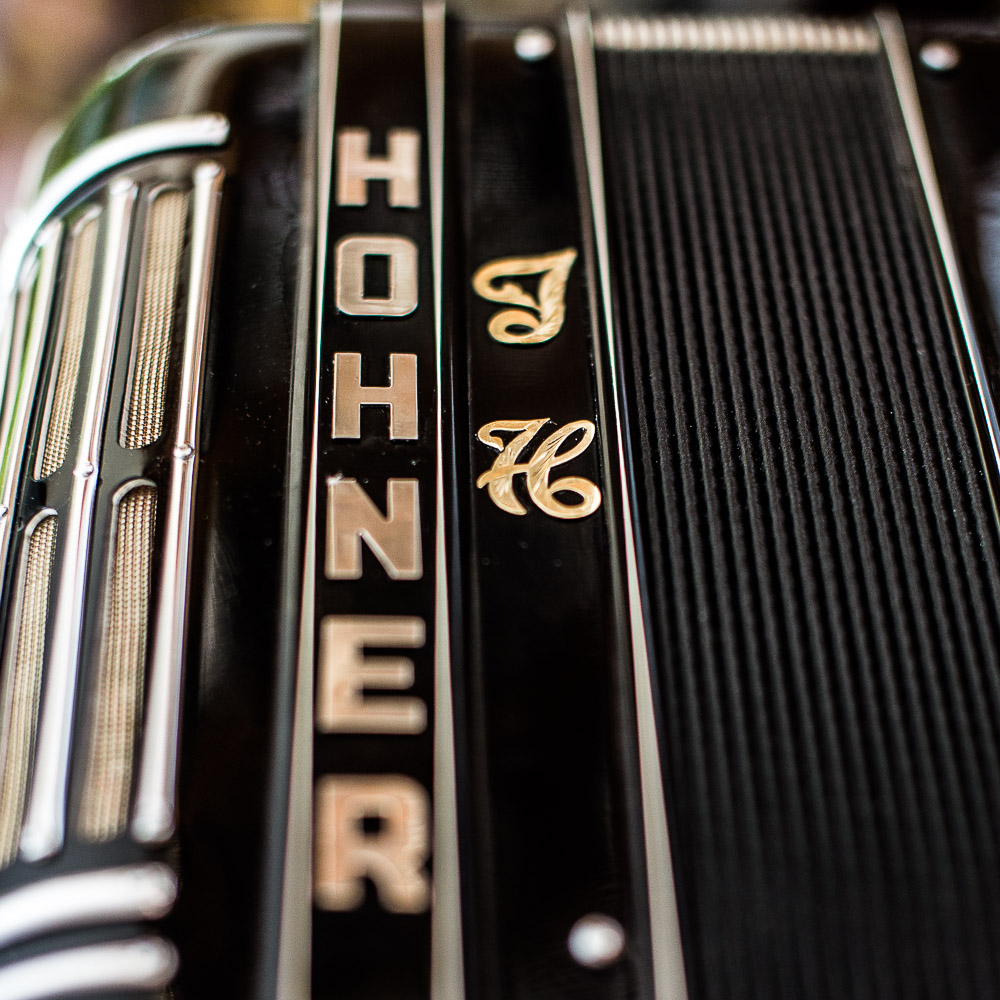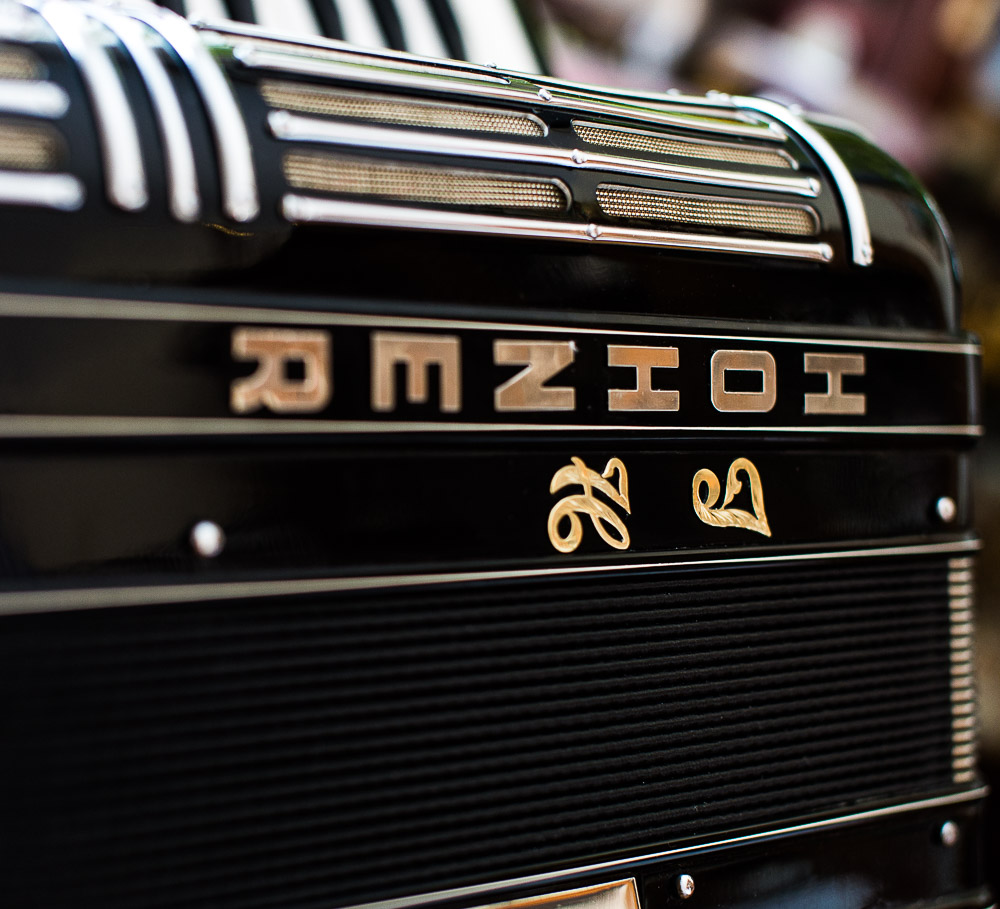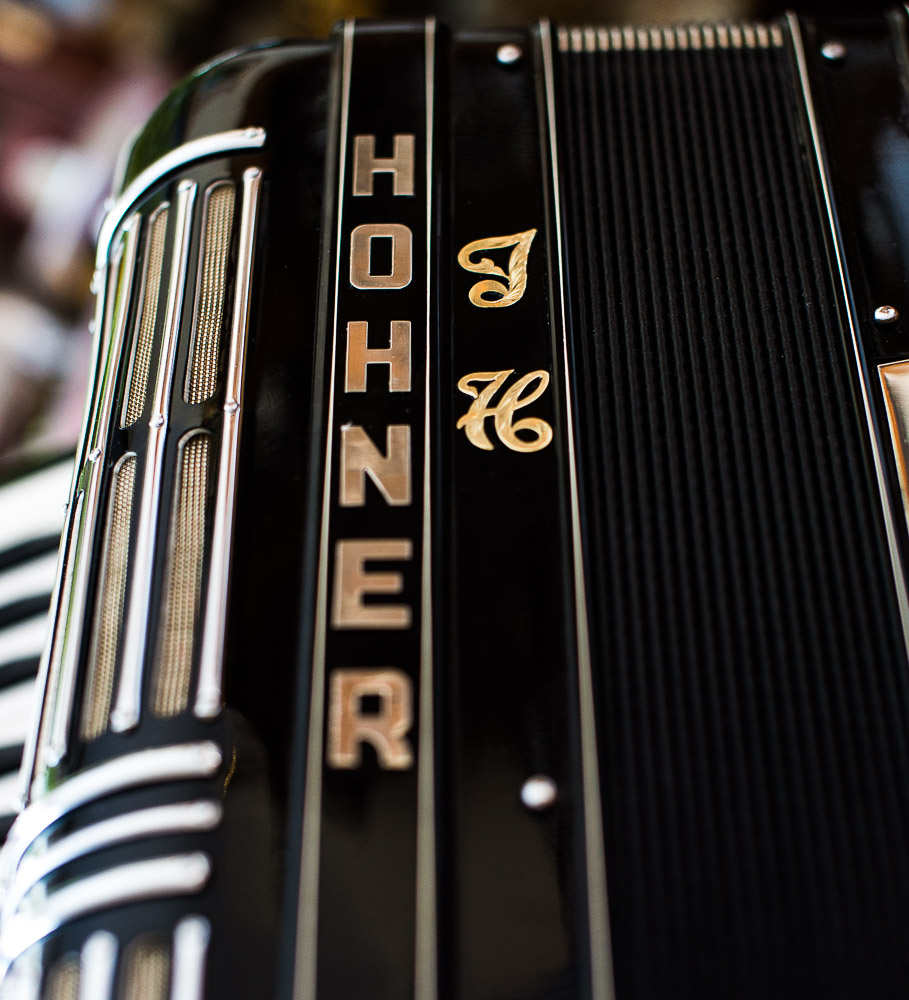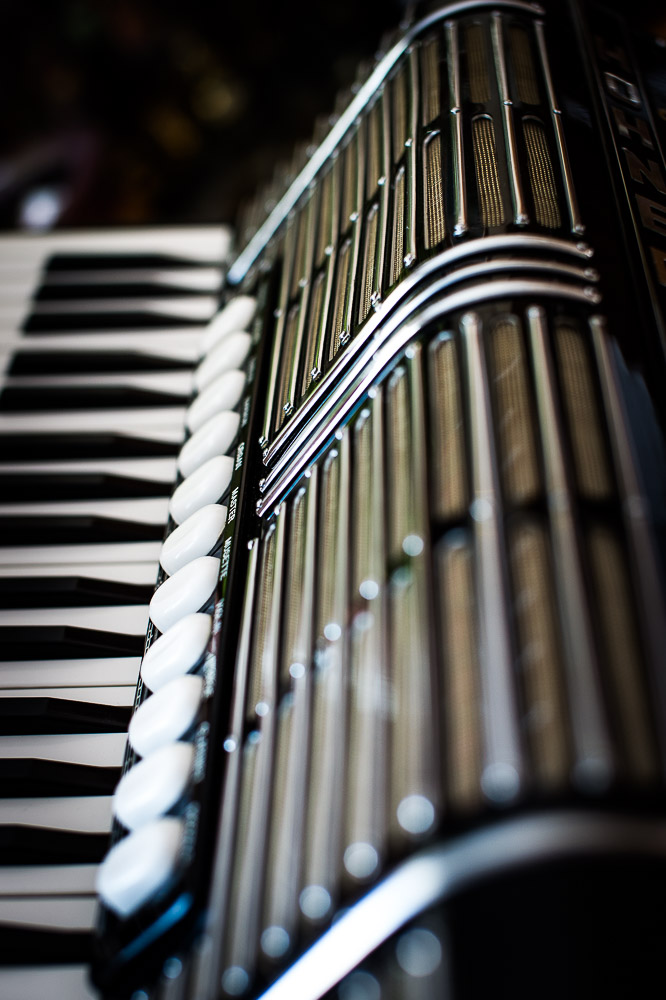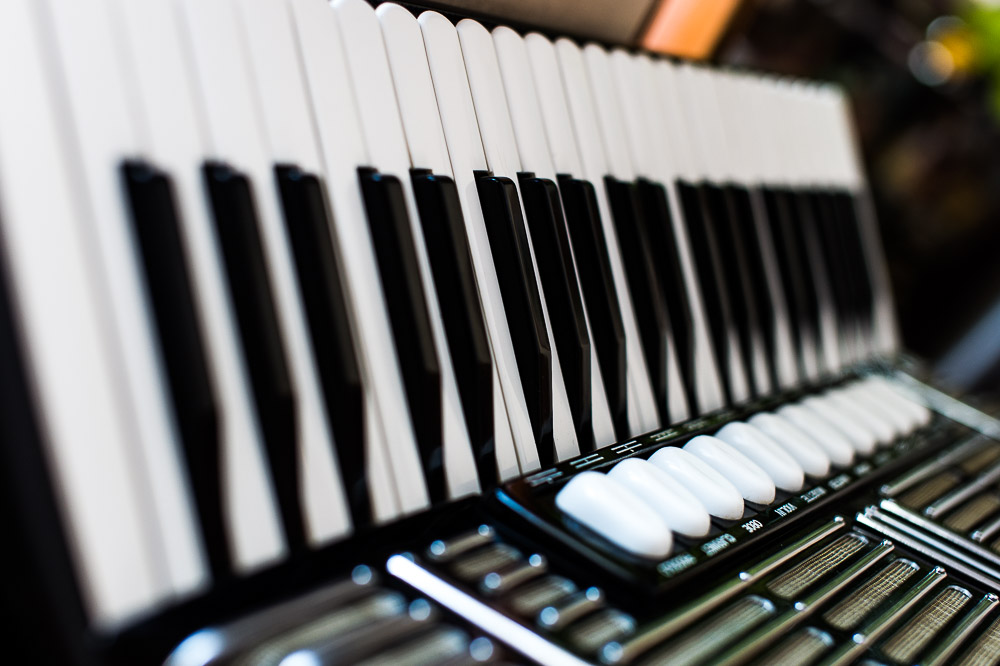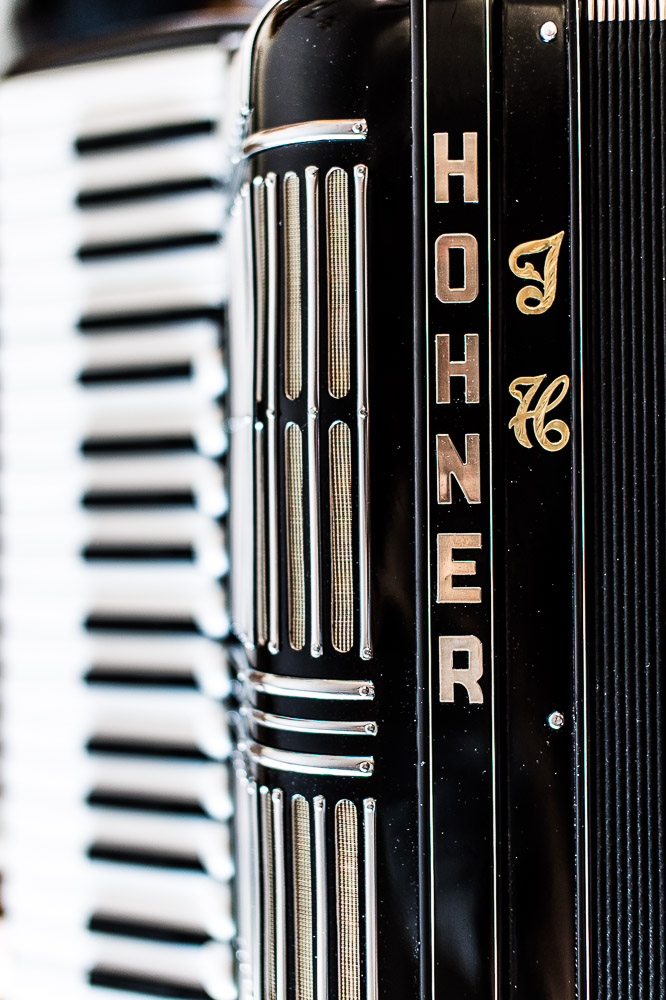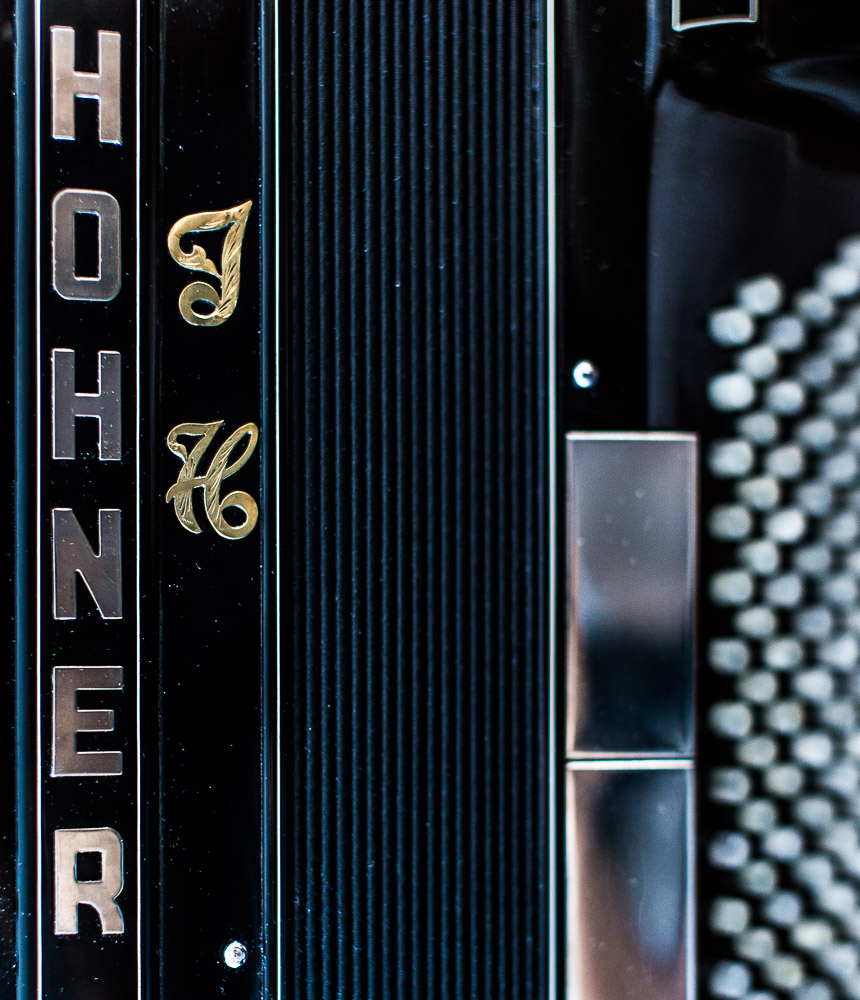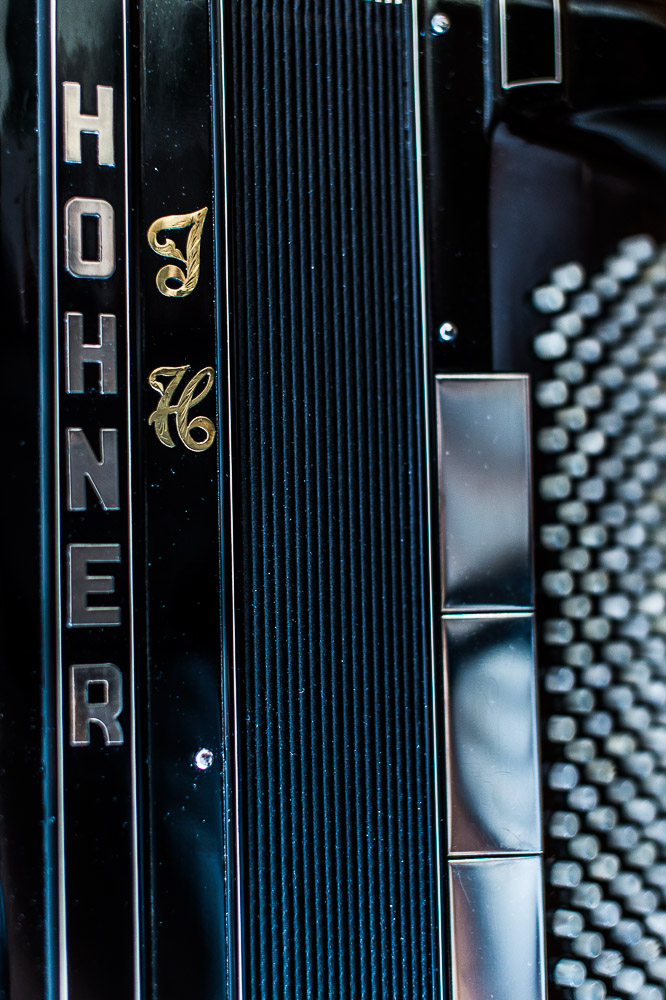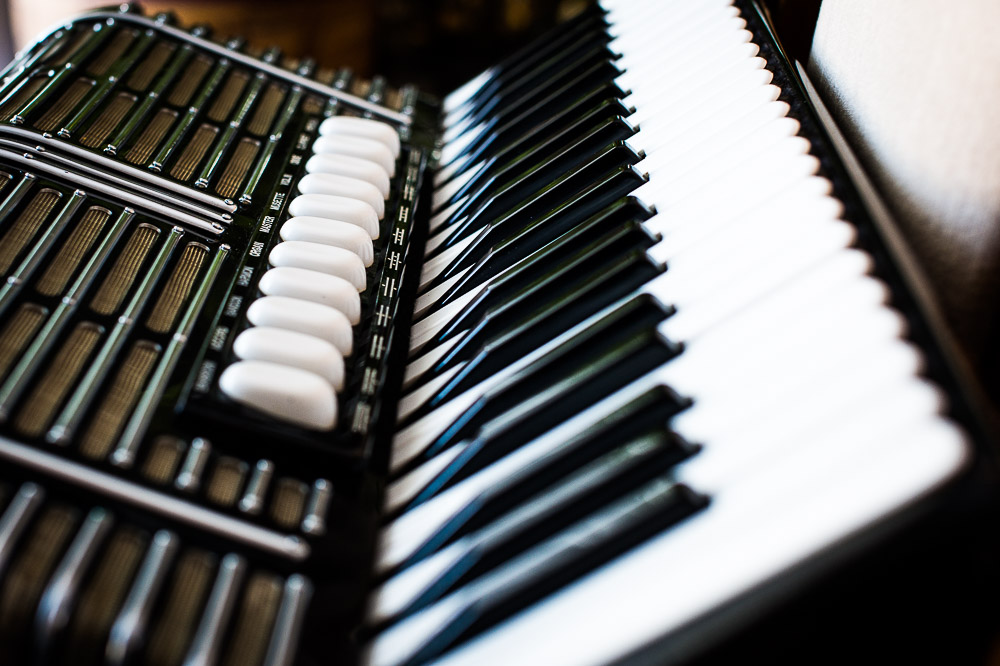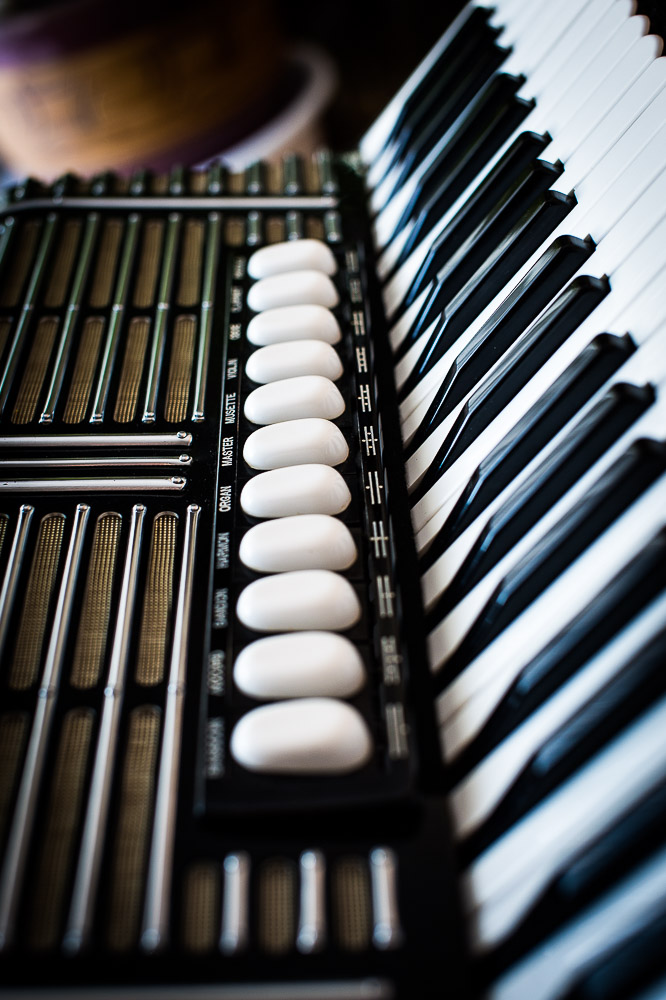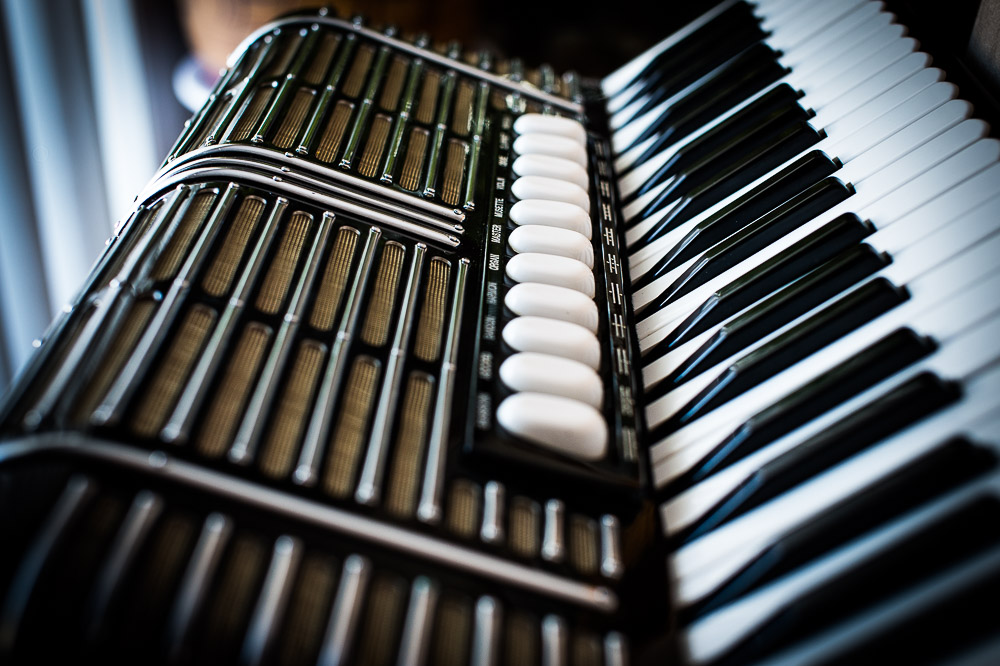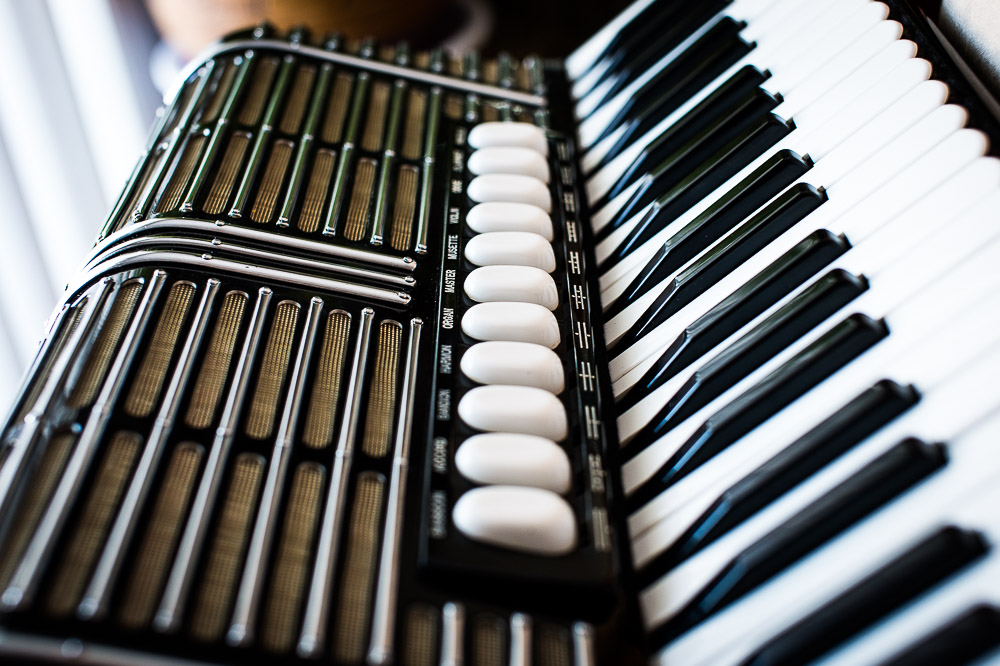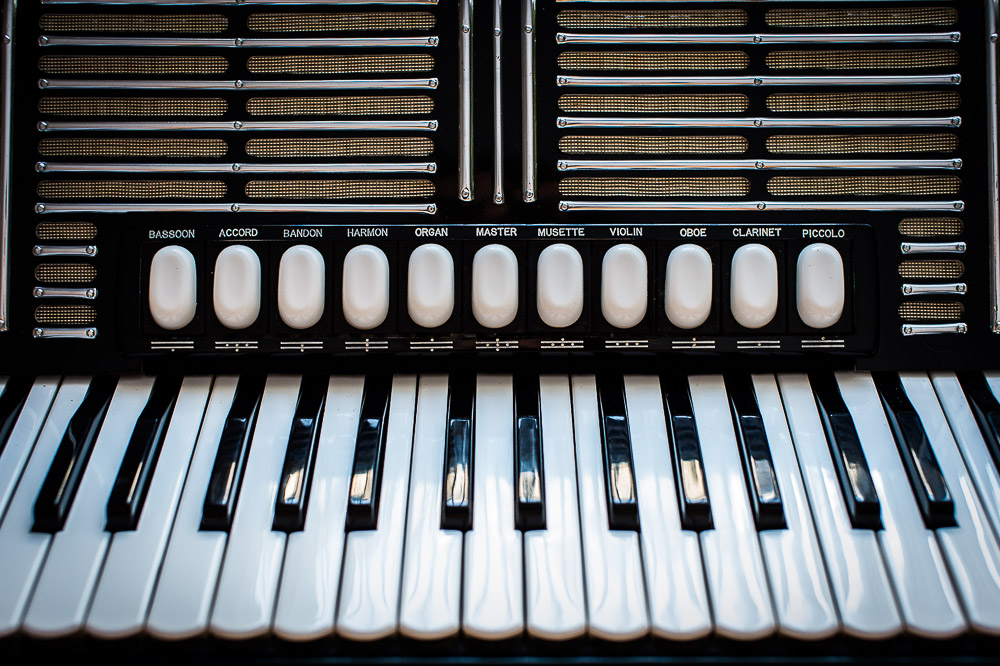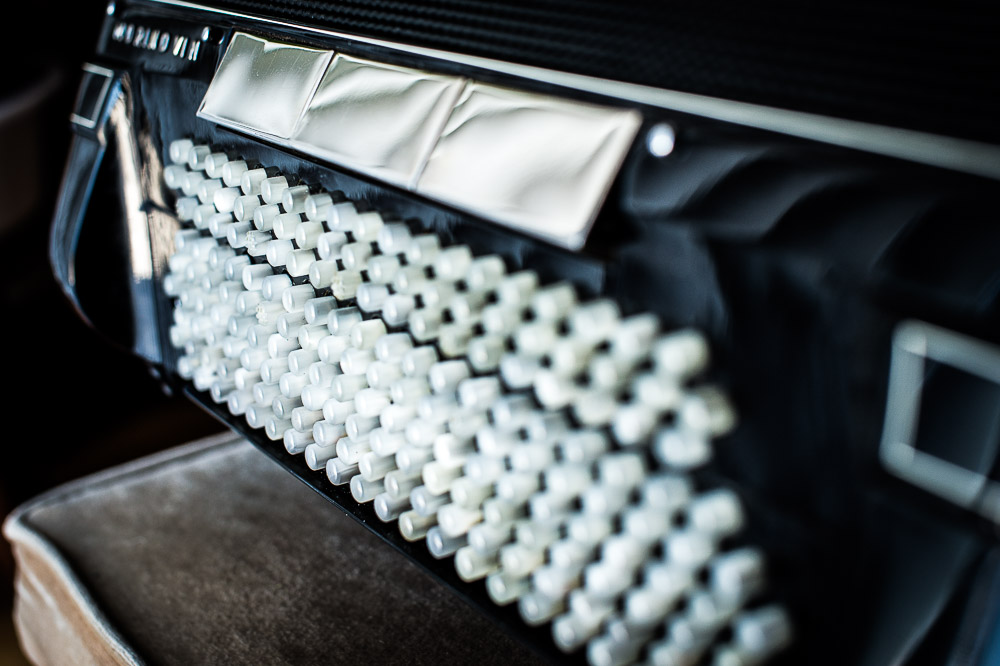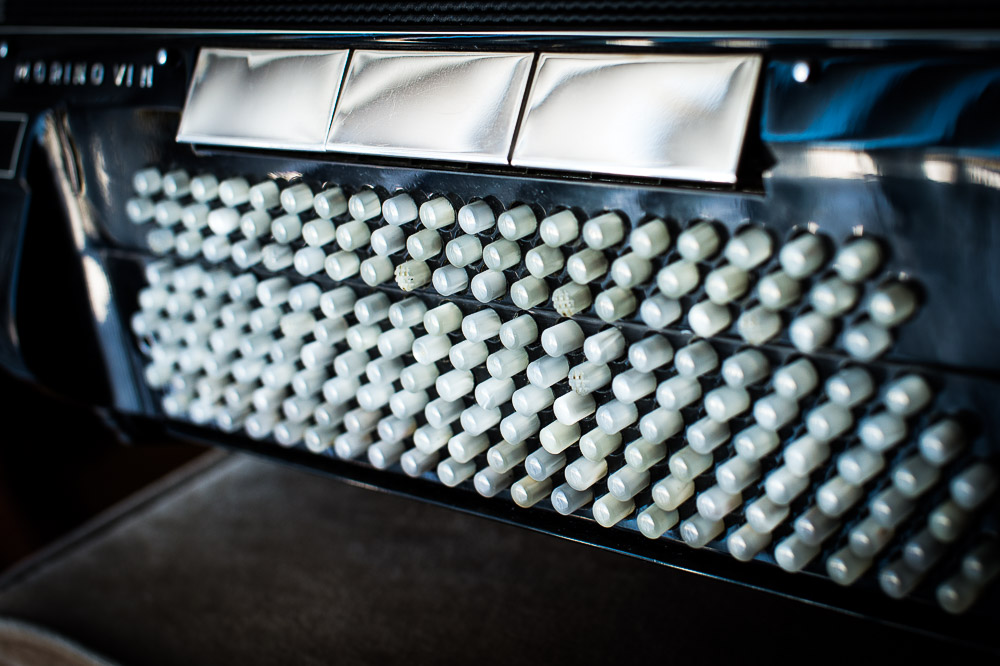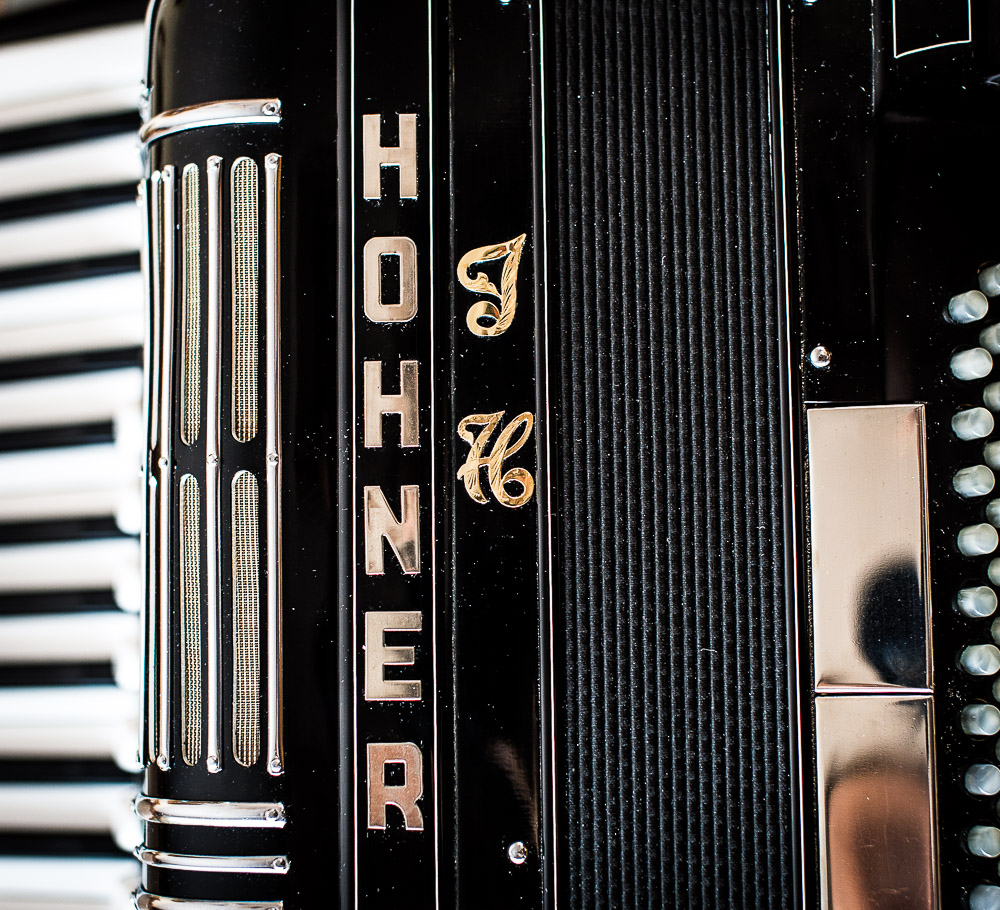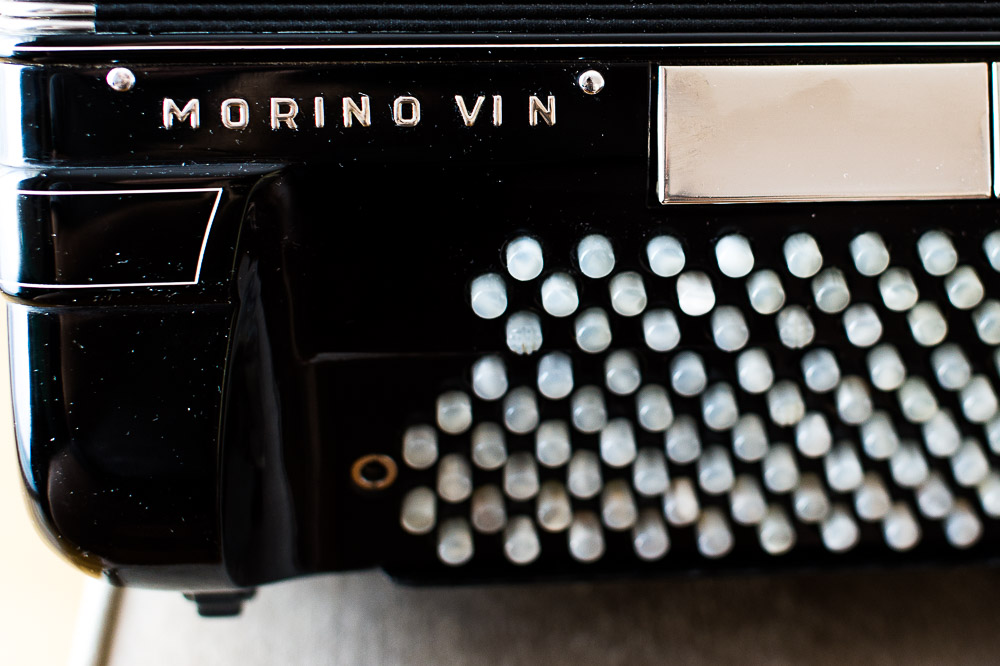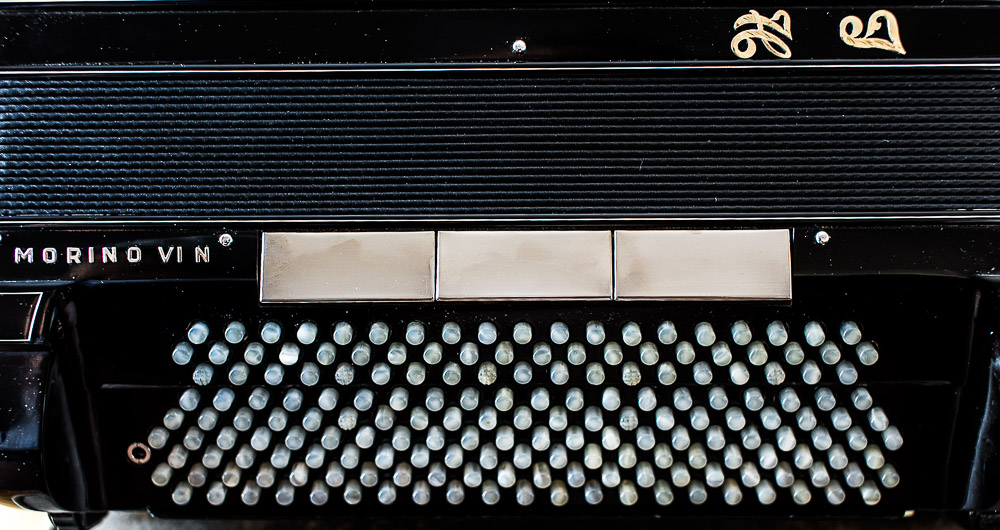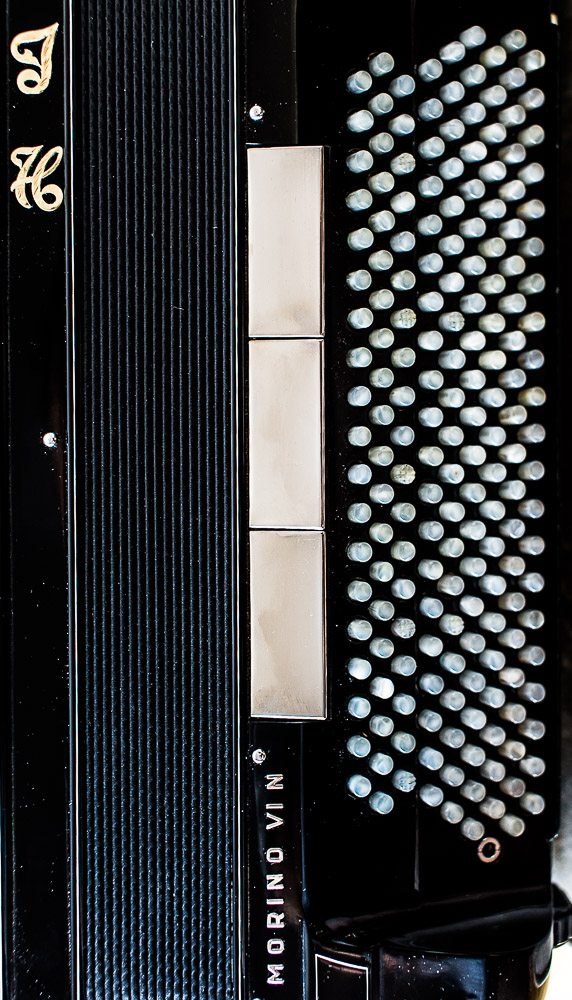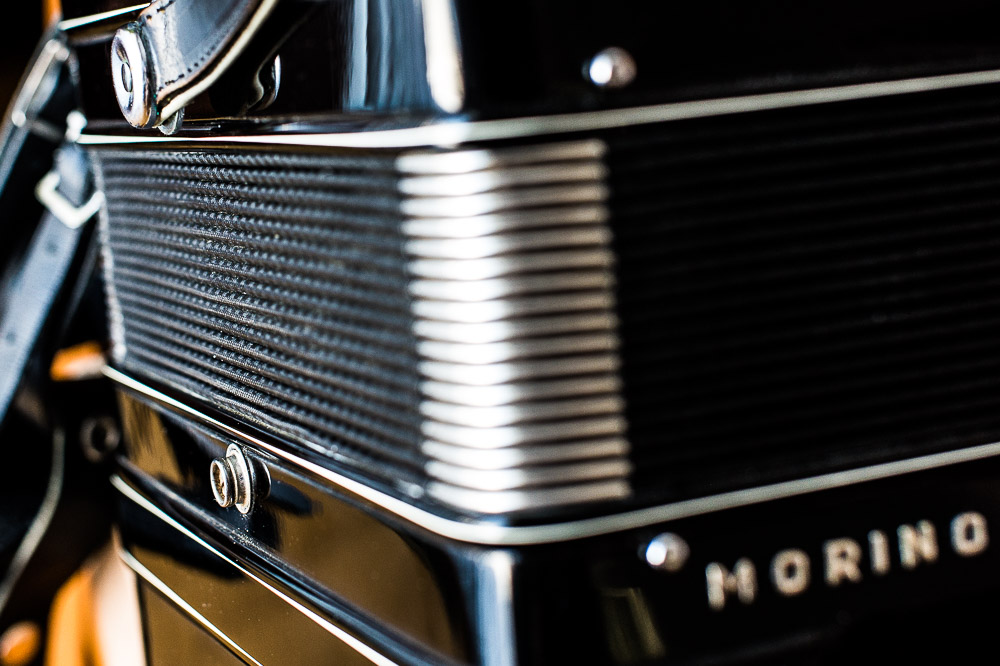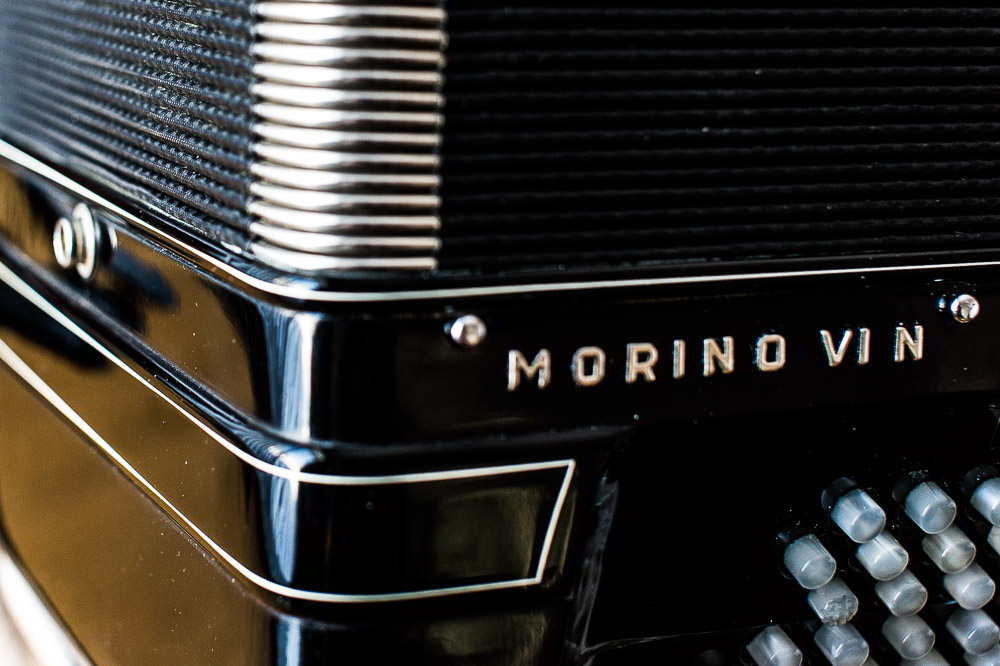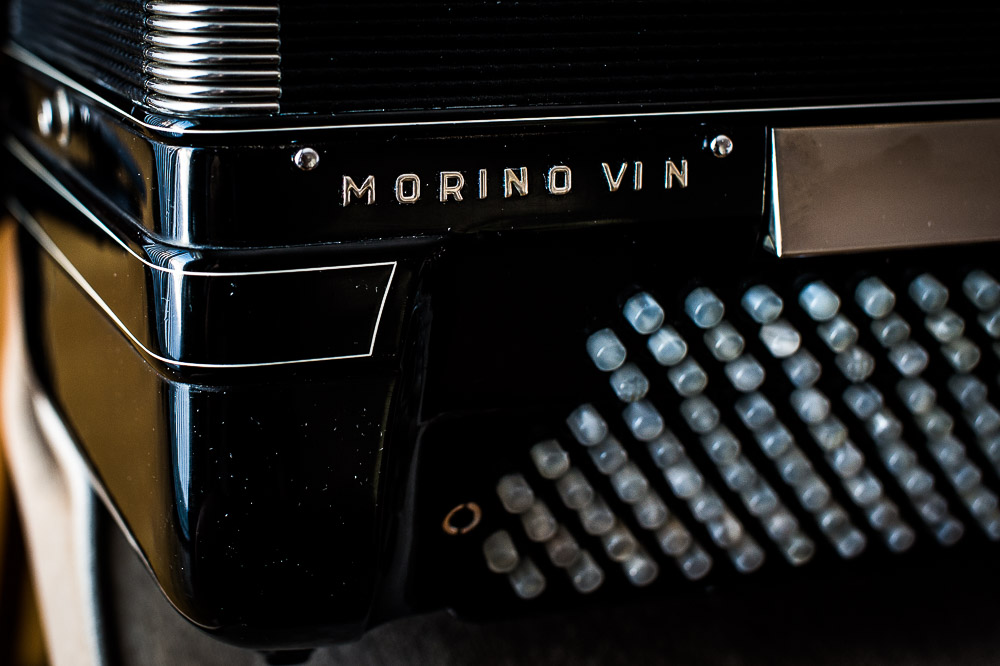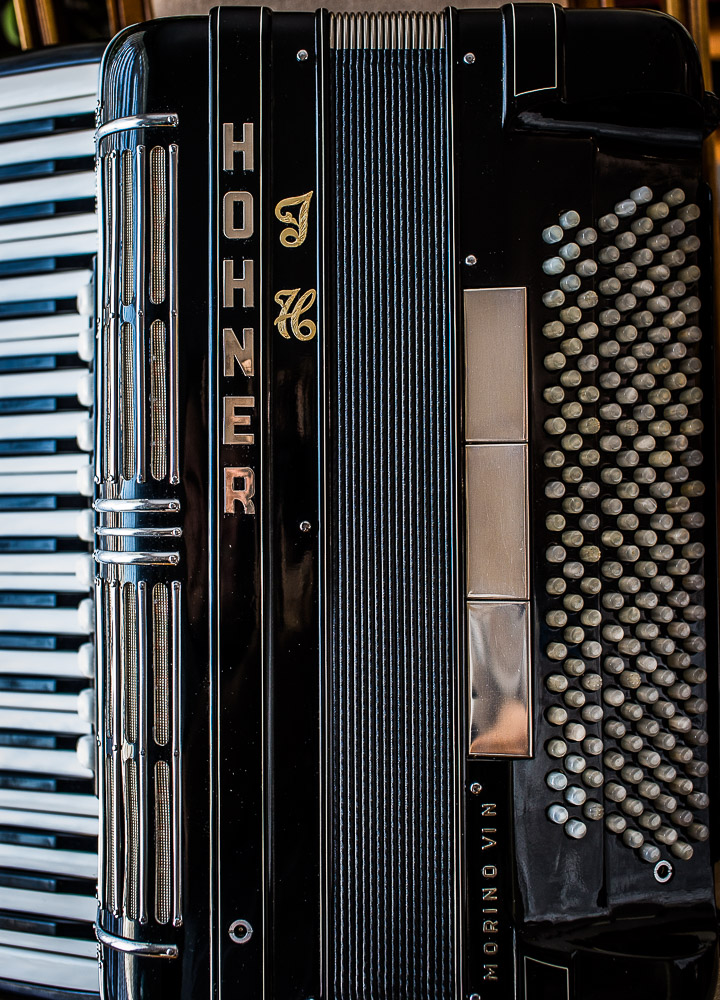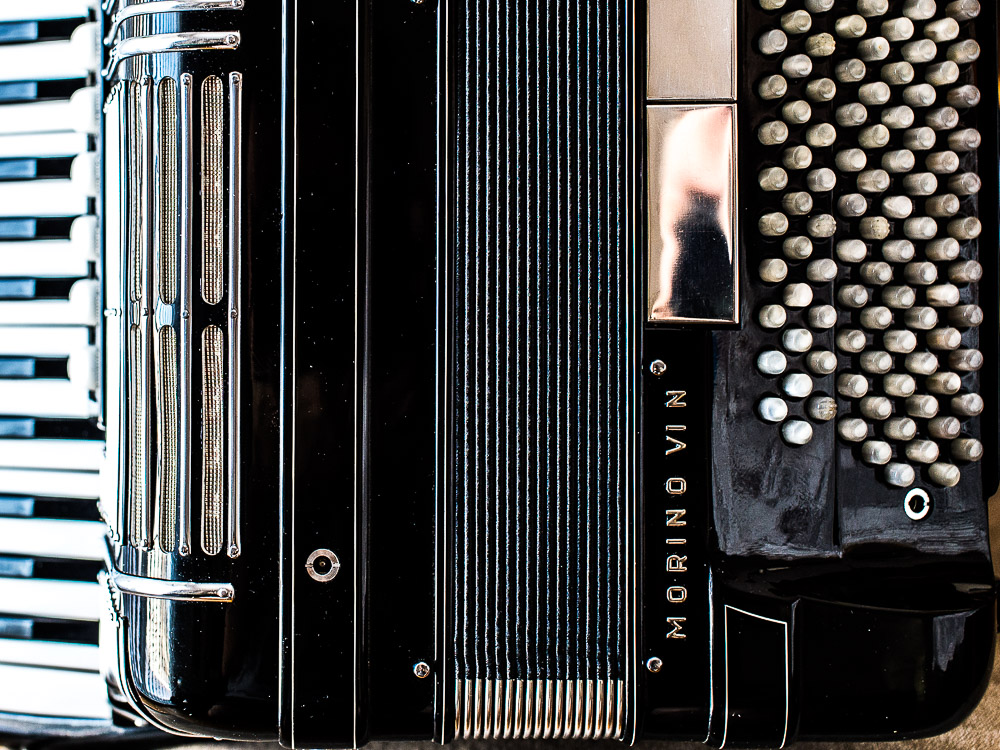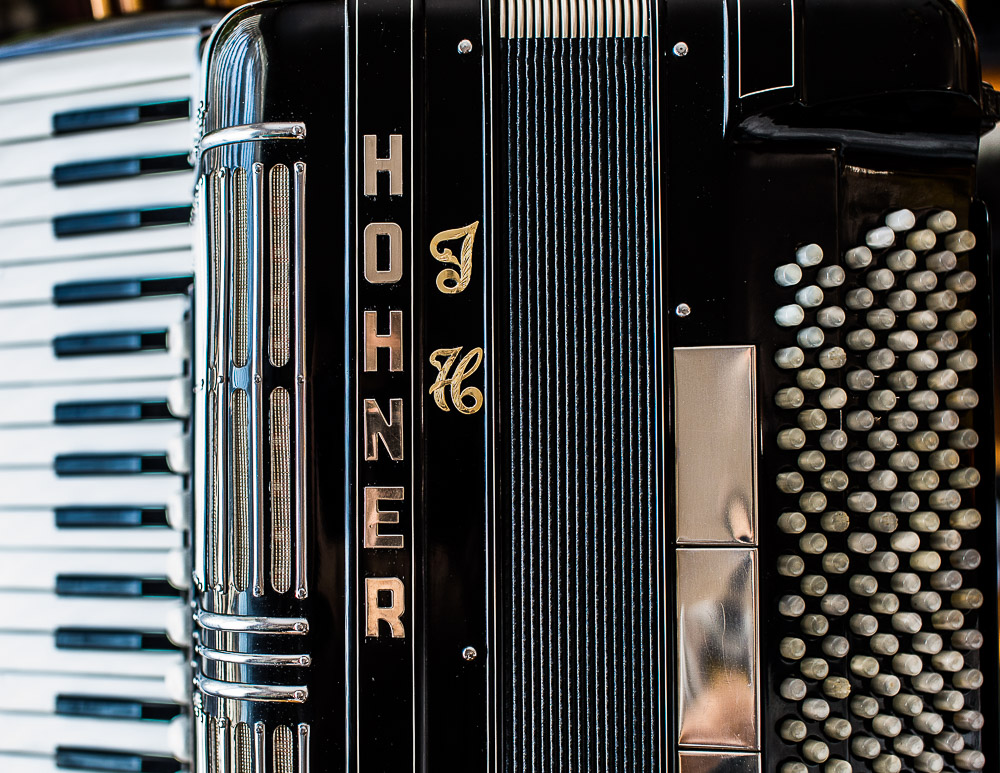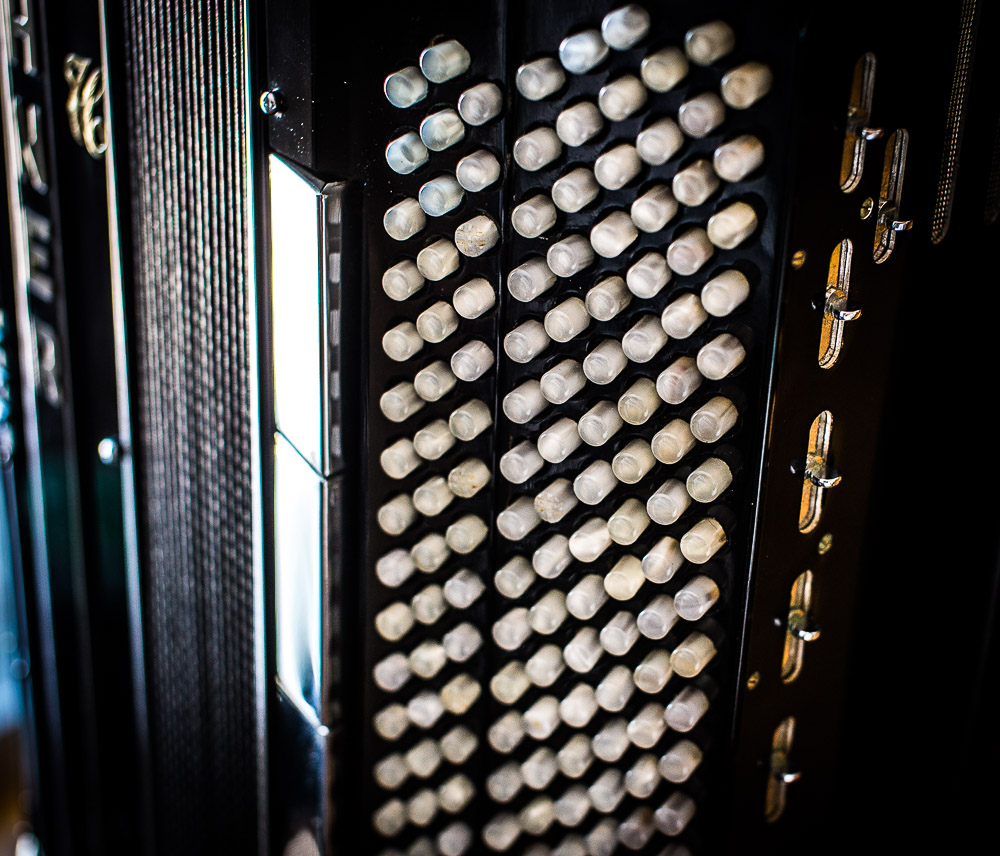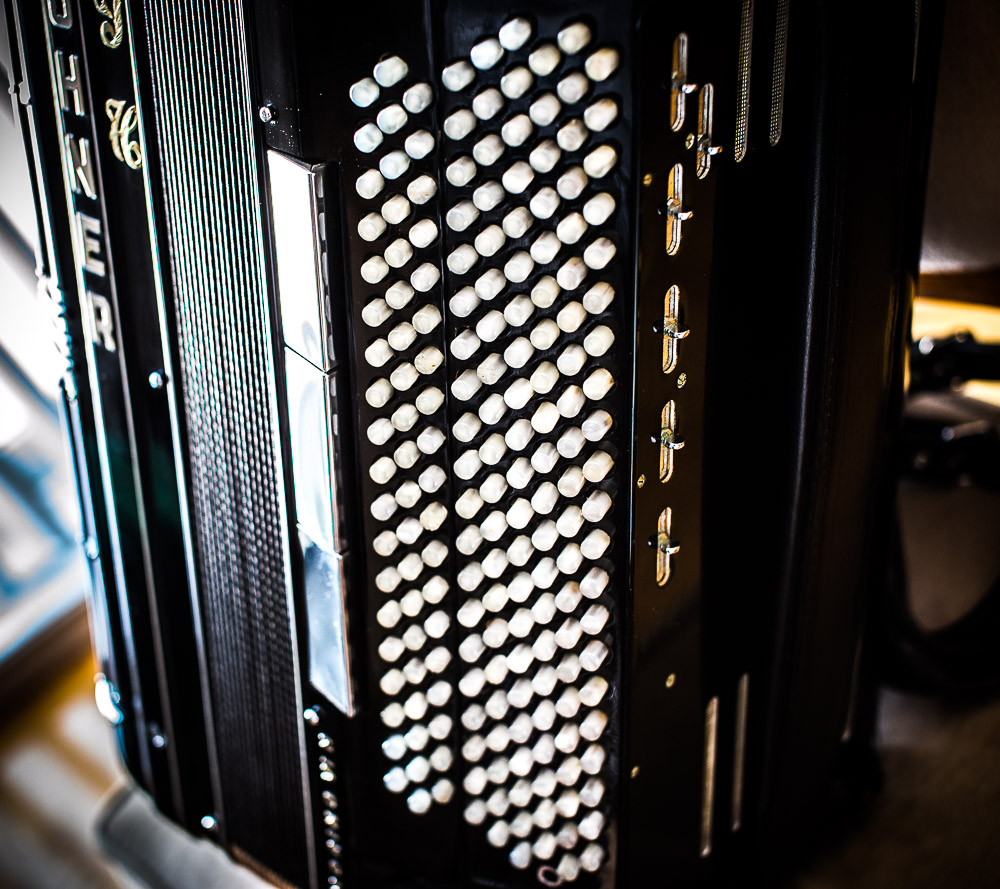April 10, 2016
The story starts with one man… Venanzio Morino, which kind of explains why my accordion is called a Morino.
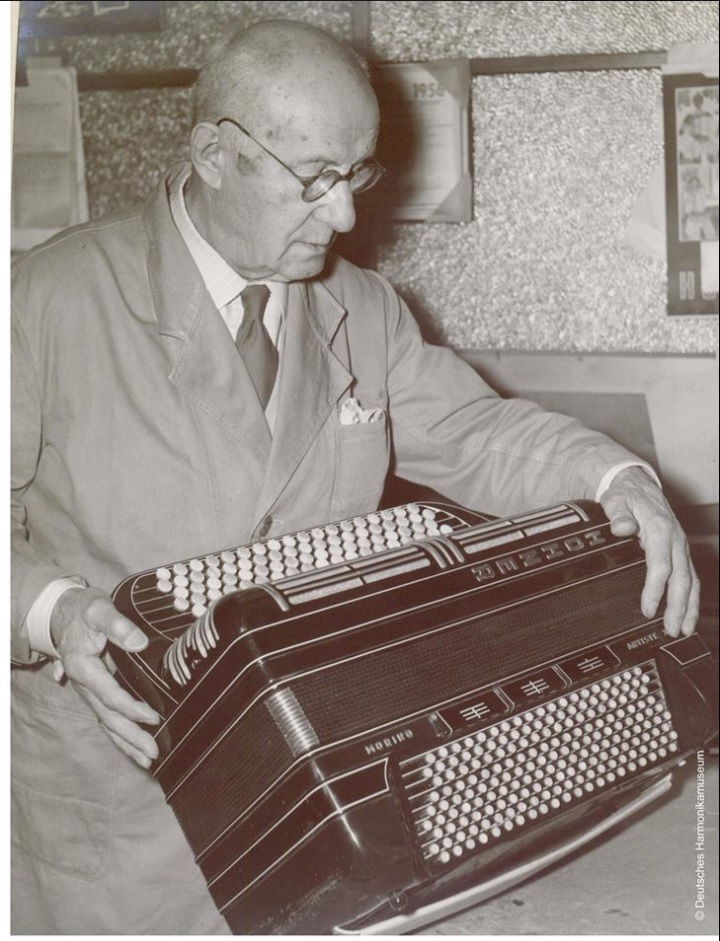
That’s a picture of the man above.
Born December 11th, 1876, there is not much info out there on his life, but it is known that he became Hohner’s chief designing engineer and started making instruments according to his own vision in 1936. His vision eventually became Hohner’s vision.
I found an online article that was apparently written just after Morino had turned 80 years old:
(Translated Article from 1956, on the occasion of Herr Morino’s 80th Birthday)
A man, his coat collar turned up, a pipe in his mouth and minding his own business, briskly striding along in the company of his dog which answers which answers to German, French and Italian commands. This Trossingen citizen who lives wholly for his craft is called Venanzio Morino, Germany’s most significant accordion builder of his time, and designer of the Hohner Morino accordion which is often claimed to be the best in the world.
Today we are able to extend to Herr Morino our best wishes on his 80th birthday and good health and happiness for the future. Nor will we forget that the 80-year-old still goes to work every day to be with his friend and excellent successor, Giovanni Gola, in order to plan, construct and achieve.
The secret behind such enduring love of work coupled with astounding vitality may be due to Herr Morino’s healthy outlook on life. Asked about his political views he answered “I am neither a Nationalist nor a Fascist but an Accordionist”. His hobbies are travel, with trips to Italy, Switzerland, French, Denmark and Belgium, the study of technical literature and also the more relaxing reading of mostly Italian newspapers and good books. His family and work mean everything to him. Blessed with a healthy and regular sleep pattern helping him to restore body and mind throughout a busy lifetime Herr Morino hardly noticed the quickly passing years. Only in his quieter moments may he occasionally have realized that he had reached the Biblical age of 80.
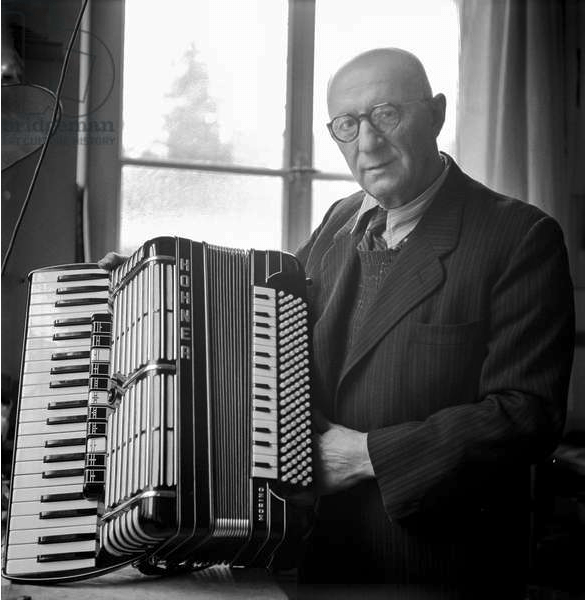
Our birthday-boy can look back on a lifetime of hard work. When only a young boy he had to go to work with his father, helping to feed a big family. Born on the 11th December, 1876 in the northern Italian village of Burnasco, we can see him daily walking to work in Turin to earn money.
It was a hard but instructive youth. It made him more aware and stimulated his inborn sense for invention. His foremost talent was for tinkering with things, so he had to become a joiner. The fragrant wood one could plane and shave was a welcome material for his talented hands. The hidden longing for music and the dream of a musical instrument suitable for the general public and it’s aspirations led Herr Morino, the apprentice joiner to construct his first melodeon. It was a difficult beginning but there was a sense of destiny. When Morino moved from Italy to Geneva he met an accordion builder from whom he gained more useful knowledge. About 1900 he set up on his own.
When, shortly after the turn of the century, management of the Hohner company decided to include production of melodeons and accordions, it was clear from the beginning that with the increase in production it would also be desirable to improve artistic quality to its utmost. Was it accident or fate that shortly after the First Would War Swiss friends of director DR. Earnest Hohner, mentioned Morino to him. After the two men’s meeting Morino decided to come to Trossingen. That was the planner and master of accordion building was able to take advantage of all the opportunities a worldwide company could offer him. Intuition and working expertise merged with ambitious plans of the Hohner company. Always encouraged by his friends Ernst Hohner and Elias Messner, in constant touch with old master Schittenhelm and numerous requests by accordionists led Morino to develop the Hohner Morino accordion which was to become a sign of world wide quality.

Despite these creative successes he remained unassuming, a humble man spending his life in the midst of his family, constantly working and planning. A widower for 10 years he married Fran Hella – nee Gottling – in 1932. She gave the man, who loved home and family life, a new home. His son Raymond and daughter Germaine, both from his first marriage, live in Geneva. Raymond manages an accordion school, Germaine is married. His second son Guido is an electrical engineer, having inherited his father’s technical talent. That is the family circle of this considerate and caring man who built and gave the world so many excellent accordions without ever expecting any thanks in return.
Working, to make life worthwhile – cultivating the arts to gather new strength, helping and guiding the next generation – caring beyond one’s own self. These are the marked characteristics of our birthday child for whom are the following words “Only what we have loved have we understood”.
Widely reputed as brilliant, his Hohner Morino accordions were available around the world: designer Venanzio Morino, whose 100th birthday would have been this year on 11th December, 1976. He died, aged 85, on 1st February, 1961 in Trossingen, his adopted home town.
He was born in the northern part of Italy, a village called Burnasco which was near Turin and became a well respected citizen of Trossingen.
Through young Morino’s tinkering his talent became prominent. The fresh wood which he planed and shaved was welcome work material to his gifted hands. Already as an apprentice joiner he developed his first melodeon. Round about the turn of the century his skill for making things was so well known that he was able to set up independently as an accordion maker. After the First World War Morino joined up with Ernst Hohner and emigrated to Trossingen in order to work in the House of Hohner. The year was 1928.
Now the planner and master had the opportunity to bring together his ideas with those of the Hohner firm. In a long lasting partnership with Ernst Hohner, with Hermann Schittenhelm as the accordion player and Elias Messner as the expert on accordion, together with being close to the wishes of the accordion elite, Venanzio Morino created, in the course of the year, the top performing instrument which would make him famous across the world – the Hohner Morino accordion.
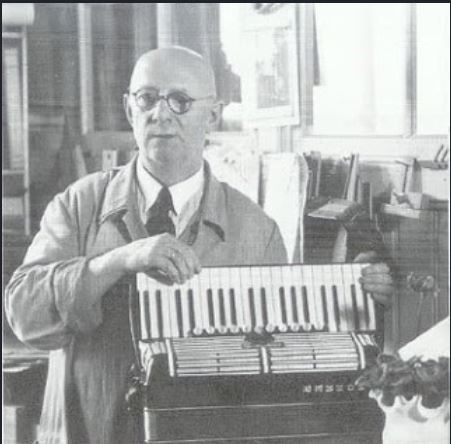
Despite his success the gifted designed had no airs and graces. Morino lived a humble life, dedicated to his work, in the small town of Trossingen. He chose to work at Hohner into his eighties, bound by friendship to his successor Giovanni Gola and with his work colleagues from his workshop. They worshipped him like a father.
Being busy to continue to give life real meaning, to cultivate his craft, to draw new strength – these were the characteristics of the accordion designer Venanzio Morino. The very best accordions which Hohner produce today continue to carry his name.
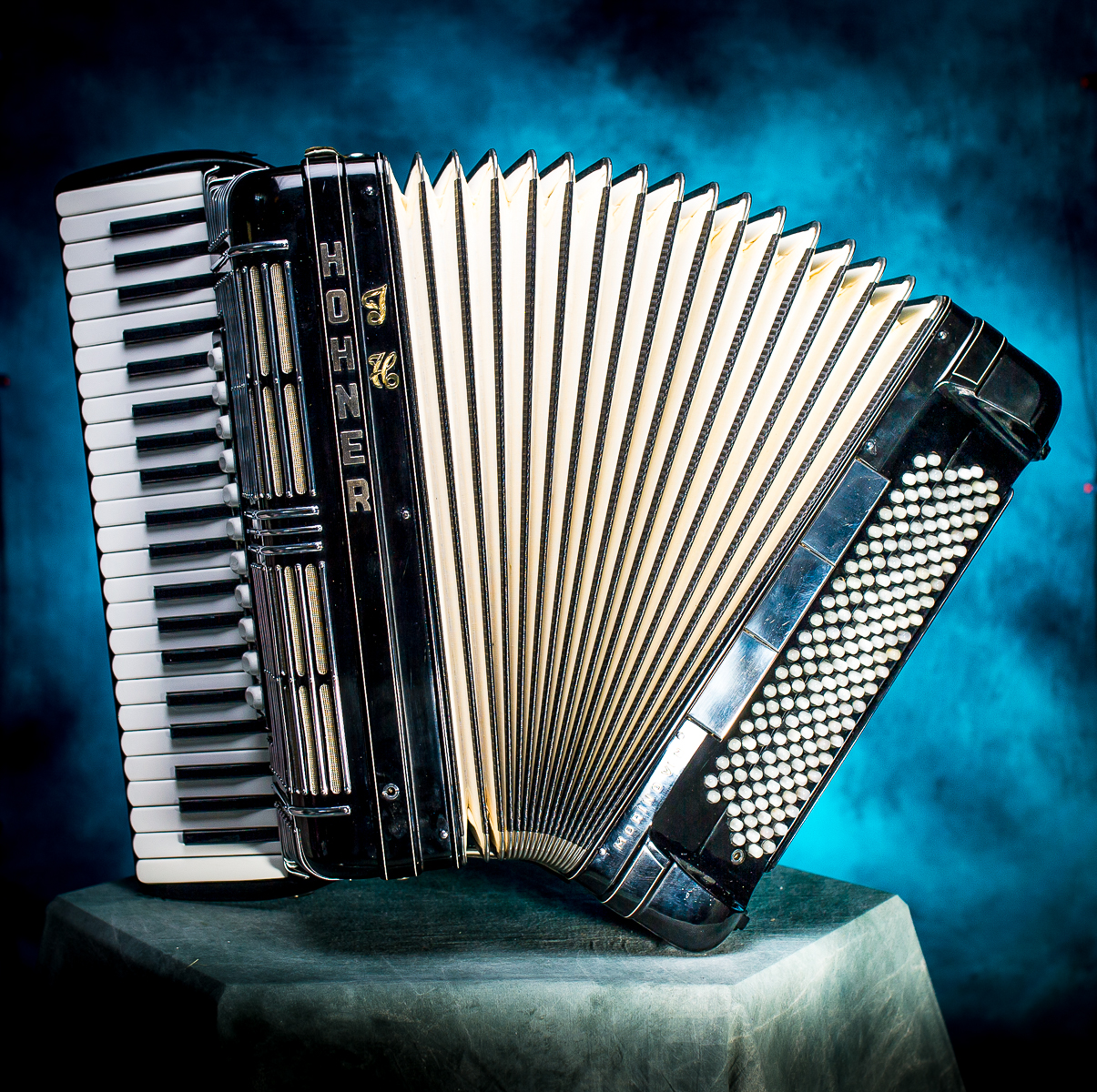
More pictures of my Hohner Morino VI N Free Bass accordion:
Here is an article about the Hohner company.
This is a story of enterprise and vision and achievement.
It commences in the year 1857 – when young Matthias Hohner, a watchmaker in the small rural community of Trossingen in the Baar Region of South Western Germany, set up the small beginnings of his harmonica factory which was destined to flourish and grow into the largest musical instrument manufacturing business in the world.
But for the true beginnings of our story we must go back further still, to the early 1820’s, when one of the first harmonicas (known then as mundaeo-lines) arrived in Trossingen from Vienna. The early years of the instrument are still shrouded in mystery, but it appears that the actual inventor of the forerunner of the instrument as we know it today was Christian Friedrich Ludwig Buschmann. Soon afterwards, Buschmann also produced the first ‘handaeline’, a forerunner of the modern accordion, which was improved by Demian, a Viennese, in 1829.
At the time, Trossingen was a village of bewildered and frustrated farmers, extracting a hard living from a comparatively infertile earth with their crops liable to frequent damage from winds and storms in the difficult terrain 2,500ft above sea level. It was also the centre of a clock-making industry which for many of the peasants employed part time in it proved considerably more profitable than their agricultural pursuits.
But about this time, clock-making too was in the throes of a depression, and the first of the clock-makers to appreciate the possibilities of using the skill of his workpeople in the manufacture of harmonicas was Christian Messner, who set up his workshop in 1827. For quite a number of years, Messner enjoyed a virtual monopoly, and the family did everything in their power to keep their production methods a strictly guarded secret. But gradually more makers entered the field, the next of the well-known ones being Christian Weiss, who opened his workshop in 1855.
Then in 1857, Matthias Hohner, already regarded as the best clock-maker in the business, decided to give up the manufacture of clocks and concentrate entirely on harmonicas. Although he only started in a small way with one or two relations and some of his former workmen, unlike the other manufacturers he did not attempt to operate a ‘closed shop’ principle, and his business developed rapidly.
Up to this time, harmonicas were generally made on the same lines as had been developed by Messner. They were made entirely by hand and each instrument was made from start to finish by the same craftsman. The construction was in two parts, the body with its cells, and the reed plate. The wooden bodies were firstly roughly cut by knife, and then smoothed and filed, and the air channels were cut laboriously by hand. The first reed plates were made of tin, and then a little later they were made of lead produced in moulds, the reed slots being cut by hand with a chisel. Metal reeds were produced by flattening brass wires to the shape of the reed slots, and brass wire was also used for the rivets. Needless to say, such difficult work with crude tools produced a very primitive instrument.
Matthias Hohner was quick to adopt new methods and new techniques. Already when he opened his factory, the use of protective covers had recently been introduced ; this was a very great step forward, because they improved performance, and the instrument looked better and lasted longer. And because he wished his mouth-organs to stand out above all others for quality, he decided to use his full name on the cover plates as a trade mark.
Hohner also quickly introduced other mass production methods and suitable division of labor in his manufacturing processes ; skilled carpenters handled the woodworking operations, and the reed cells were cut by machine ; the reed plates were produced by rolling instead of hammering ; and brass was adopted for the reed plates instead of moulded lead. The innovation had already been adopted by a firm called Hotz in Knittlinger ; it resulted in an instrument of improved quality, and Hohner was quick to adopt the process also since from the start his guiding principle was to produce an instrument which was the foremost for quality.
Continuing efforts to streamline production methods, while fully maintaining and improving the quality of the instruments produced, were symbolized in 1880 by the introduction of the first steam engine into the factory. A vast expansion of demand had taken place during the mid-1860’s by the development of a good export trade to America. In 1867, the output of harmonicas was 1,433 dozen which had risen to 4,400 dozen by 1875, and to 6,000 dozen by 1879. This total market was hit by the severe industrial depression of the 1890’s but alternative markets were developed in other parts of the world and by the turn of the century, Hohner instruments were enjoying a worldwide market.
Records show that in the year 1875, the total number of people engaged in the harmonica industry at Trossingen was 250. They were spread over the different factories as follows :-
Matthias Hohner, 85 workers
Andreas Koch, 60 workers
Christian Messner & Co, 40 workers
Christian Bilger, 25 workers
Joh Irion, 10 workers
Gebr. Ulrich, Talheim, 8 workers
Despite the growing use machinery, and the erection of new factories, the cottage industry was still flourishing and piece workers were still numbered in hundreds in the year 1888. Hohner’s next step was to carry out a long cherished plan of establishing branches in the various areas where piece workers operated, and he thus established a system of branch factories where the labour was concentrated. Industrial relations between workers and management has always been good and there has never been a strike nor any unsatisfactorily resolved dispute throughout the hundred years during which the industry flourished.
When in September, 1900, Matthias Hohner handed over his business to his five sons, the production figures and the number of workmen employed were already the highest in the industry, and the family name enjoyed an enviable reputation throughout the world. Each son now played his special part towards the further growth of the business. Jacob, the eldest son, carried on his fathers good work of general management meticulously for many years. Matthew and Andreas were responsible for further developing the instruments themselves. Will tackled the cultural side, and proved that industry and music must move together hand-in-hand while Hans, the youngest, devoted himself to the development of the American market, and on the export trade in general. He went to live in New York and became an American citizen.
The second phase in the development of the great Hohner business was mainly concerned with the continuation and rapid expansion of the manufacturing side partly by means of the absorption of competitive manufacturing firms. The first to be taken over were the Knittlingen factories of Hotz and Pohl, in 1906. Gradually other firms were absorbed, amongst the last being Messner and Weiss in 1928, and the Koch concern in 1929. Thus, in three generations the Hohner enterprise had become the largest musical instrument undertaking in the world, employing nearly half of Trossingen’s 8,000 inhabitants.
After inventing the mouth-organ Buschmann had designed a reed instrument with 20 well tempered reeds with valves fixed to a brass table, and with leather bellows with three folds to produce the air required to motivate the reeds. In the following years, Buschmann concentrated on developing reed instruments fitted with foot operated bellows (the harmonium), but meanwhile Demian of Vienna developed the handaeoline, and in 1829 brought out an improved instrument which was called the accordion. This remained in the background for 50 years, and then was reintroduced in Vienna but was sadly neglected until the harmonica industry in Trossingen and Klingenthal took it up.
The diatonic accordion has the same musical principle as the mouth organ, but even in its most simple beginnings it was much more complicated and presented a number of technical manufacturing problems. Long and expensive experiments were carried out in Trossingen before the first diatonic accordions appeared on the market, and even then they had a mixed reception from the public, but as the quality and scope of the instruments were improved by continuous experimentation, so did they meet with an increasing demand from all over the world.
In the 1950’s the Hohner business continued to expand and growth of manufacturing potential was fully matched by development of the technological resources of the firm, resulting not only in great improvements in the production processes, but also in the instruments themselves.
But despite vast expansion of the firm it remained essentially a family business, with the third generation of Matthias Hohner’s family now guiding the destinies of the firm in the same efficient way that had always characterised the management of the business.
The Senior Director was Dr Ernst Hohner, the son of Jacob, who concerned himself mainly with the factory management and with the firm’s various cultural activities. The Sales Director, who was also responsible for the general financial policy of the firm, was DR Karl Hohner, son of Matthew, whose other son Matth, was in charge of the technical development of the harmonica manufacturing resources. This duty was shared with Walter, the youngest son of Andreas – whose eldest son, Matthew was President of M. Hohner Incorporated of America. The General Manager of the American firm was Frank Hohner, the only son of Will. The American branch was actually founded by Hans, who had no children.
As for the coming generation there was evidently no shortage of descendants to carry on the traditions established by Matthias Hohner in 1857. Dr Ernst Hohner had two daughters, one of whom was the wife of Dr Karl Scherer, who was in charge of production in the accordion and reed factories, and experimental research. Dr Karl had one daughter, Matthew had two sons and one daughter, Walter had one son and two daughters and Frank had three daughters. Perhaps one of the best-known members of the firm in this country was Konrad Burgbacher, the Export Sales Manager.
Such then is the history of the great Hohner industry which in 1957 turned out something in the region of 20 million harmonicas and 400,000 accordions annually and employed nearly 5,000 workers in their manufacture. The firm also provided employment for many thousands more in the musical distributive trades throughout the world – and pleasure and enjoyment for countless millions of performers and listeners.

Enjoy!
